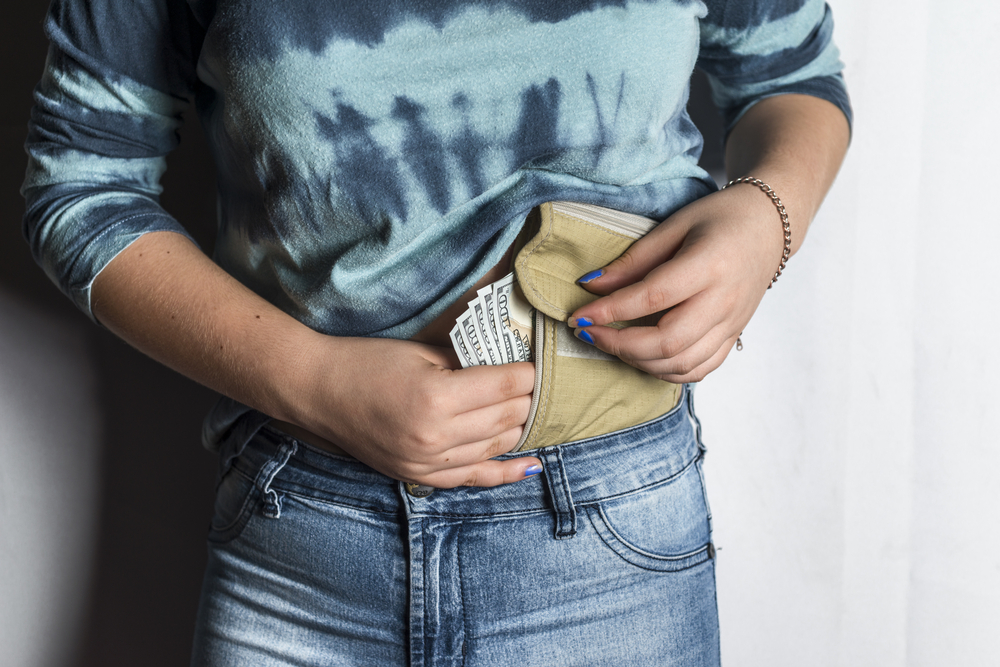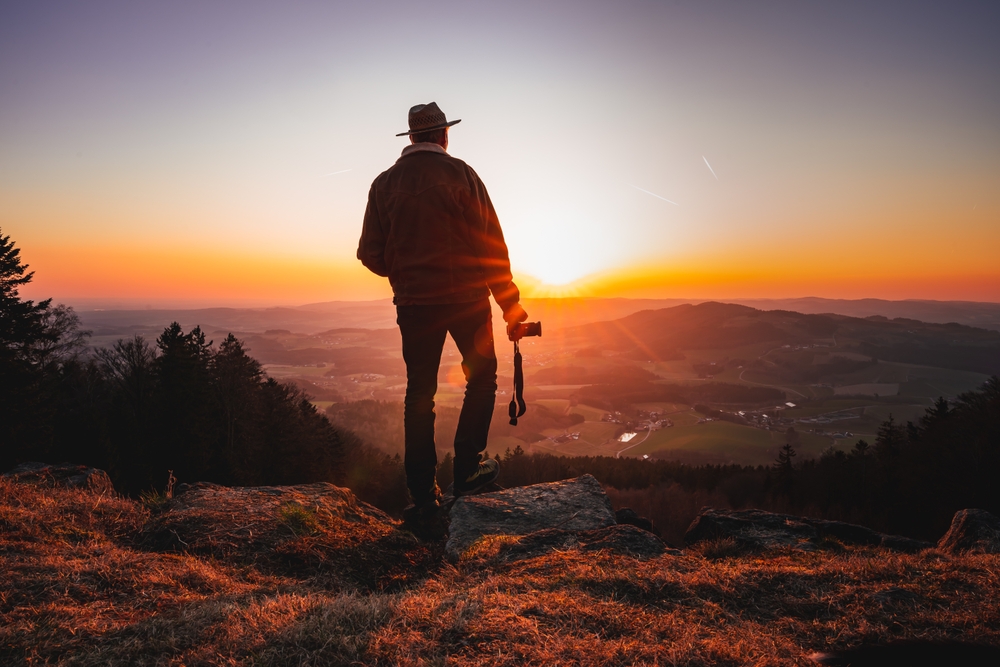Travel activity is on the rise as more Americans are on the go this year and engaging in so-called “revenge travel” to make up for trips not taken during the pandemic lockdown. By all means enjoy these trips, but also remember to stay safe — and that includes keeping your money secure while you’re out and about.
While cards are a staple for financial transactions, there may be circumstances where it’s appropriate to carry actual cash as well. Here are some tips on how to keep your money safe while you enjoy your travels.
Stick to credit cards…
One way to stay financially safe while traveling is to use credit cards. They come with zero liability protection in case your card is stolen or compromised, as well as other consumer protections. For one, you can dispute fraudulent charges and billing issues. If you use debit cards, you will have fewer protections and could find yourself on the hook for losses (though you’ll still want to keep a debit card with you for withdrawing cash at ATMs).
Different credit cards offer various travel perks (such as free lounge access, lost luggage compensation and travel insurance), so it can be a good idea to take two or more cards that align with your needs. It’s also smart to have more than one card handy in case you lose one. Cards issued by the Visa and Mastercard networks tend to have wider global acceptance than those issued by American Express and Discover.
As a safety measure, make copies of your cards to store your card information for reference in case you lose your physical cards. Don’t rely on using a mobile wallet rather than your physical cards, in case you lose your phone while traveling.
…But hold some cash, just in case
Even though it’s safer to rely primarily on credit cards, it’s still a good idea to have some cash available as a backup — and not just because it’ll come in handy if your cards are stolen. Smaller restaurants and retailers might insist on cash, and you could need cash to pay for smaller transactions with street vendors. Also, if you’re somewhere off the beaten path, cash is likely to be a more readily accepted mode of payment.
You can pick up cash before traveling by exchanging your U.S. dollars for the currency of your destination, for a fee, at a bank or credit union. At your destination, you can also get local currency at an ATM or at the airport right after your arrival (though, if you have to use an ATM, take the time to find one in a safe location).
That said, when you do carry cash, keep it safe. Opt for a money belt you can wear around your stomach, which can help you store your cash in an inconspicuous manner.
Let your bank know you’re traveling
Before heading out on your travels, notify your bank of your travel plans — especially if you’ll be traveling abroad. That way, it will know not to decline transactions that seem suspicious. You can do this over the phone, by contacting a representative or online.
Keep in mind that banks often utilize fraud prevention measures that could be triggered if they see activity on your card account that isn’t in line with your typical spending patterns. Your issuer could then suspend your account while contacting you to verify the charge, potentially putting you in a tough position while traveling.
Since you don’t want to have a card transaction declined unexpectedly and be left without any means of paying for your purchase, keep your bank informed about your travel plans. Then, when it sees any charges you make while miles away from your homebase, there shouldn’t be an issue.
Set up account alerts
While notifying your bank of your plans, see if you can sign up for credit card account alerts at the same time. When you set up purchase alerts, you’ll get text, email or push notifications whenever your card is used. Then, if your card is somehow compromised and someone uses it for an unauthorized transaction, you’ll know about it in time to take action.
If you get a notification about a transaction you don’t recognize, immediately notify your issuer so that it can look into the matter and freeze the card if necessary.
Freezing your credit may also be a good idea, so that no one can fraudulently open credit card accounts in your name while traveling. If needed, all three credit bureaus — Experian, Equifax and TransUnion — allow you to briefly thaw your credit freezes in order to apply for credit. Once the thaw period expires, your credit will be re-frozen, protecting you while you’re away.
Be on the lookout for scammers
Tourists on vacation can be an easy target for scammers, which is why it’s important to be watchful of your belongings and cash.
One popular scam is credit card skimming. This is common at gas stations and other places that have ATMs, as ATMs can be set up to capture your card information and enable scammers to use it for fraudulent transactions.
To protect yourself, prevent people nearby from seeing your personal identification number (PIN) when you enter it at the ATM. Further, don’t give your passport or credit cards as a security deposit to tour operators or others, and avoid overindulging at local bars. Doing so can cause your judgment to be compromised, allowing unscrupulous people to take advantage of you.
Pickpockets also present a hazard to unsuspecting tourists. Based on tourist reviews, popular tourist spots such as Barcelona, Paris and Rome tend to attract pickpockets looking to prey on tourists, so be careful in these types of destinations. Pickpockets may operate alone or in a team, with one person distracting you while their partner looks to take your wallet.
Be watchful when shopping with street vendors too, as they could compromise your credit card or give you incorrect change. And while most merchants are reputable, some may well team up with pickpockets and distract you while their partners ply their trade on you.
Consider getting travel insurance
You may also be wondering if travel insurance is worth it. This sort of insurance offers protection against medical emergencies, trip cancellations and lost baggage.
However, note that a number of credit cards also come with travel insurance benefits that protect you from the fallouts of canceled flights (including a potential hotel stay) or lost baggage, assuming you use the card to book your travel. Medical expenses that your health insurance won’t pick up could also be covered by your credit card’s travel insurance.
If you’re on an extended international trip, though, it may be a good idea to take out a separate travel insurance policy. These types of policies are available on a one-off or annual basis, and they can be used to cover any shortfalls between your card’s travel insurance and your medical insurance. Take the time to evaluate any travel insurance or card benefits you already have access to before deciding whether a standalone policy will be worthwhile.
What to do if you’re robbed abroad
As a tourist, you may be vulnerable to being robbed. Be especially careful when you’re in a crowded area, as pickpockets could sense an opportunity to take advantage of you. That said, it may not even be a physical assault that you fall victim to. You could have your card information or other sensitive personal information stolen if you use unsecured public wi-fi, use an ATM with a card skimmer or lose your cards.
To minimize the impact of an attack, don’t carry more cash than you anticipate needing for the day. Also, be careful with your mobile phone, as it contains a lot of information about you, potentially including your credit card and bank information.
In case you do end up getting robbed, immediately contact the local police station and file a report. You should also get a copy of this report for when you file an insurance claim. If your credit card is stolen, get in touch with your bank — and if it’s your passport that thieves get away with, get in touch with the nearest U.S. embassy ASAP.
If your credit card information or other personal information is compromised, it’s also a good idea to keep a watch on your credit report (assuming it hasn’t already been frozen). That way, you’ll know right away if a fraudster takes out credit in your name.



